The Tucson area received a record amount of rainfall in July 2021 – but also had the second driest summer ever recorded in 2020. Rain is celebrated and needed in the desert but is by no means consistent.
Due to the inconsistency of rainfall throughout the Sonoran desert (and thanks to our still-ongoing drought), various forms of rainwater harvesting are helpful, especially in ensuring that your yard and garden receive enough water.
One of the simplest ways to get started with rainwater harvesting is to set up a rain barrel.
In this article, we’ll walk you through some ways that you can set up a rainwater barrel system in your own yard.
Note: As with any major yard or garden project, be sure to check with your HOA, the property owner (if you are renting), or neighborhood association before making any changes.
What is Rainwater Harvesting?
Harvesting rainwater used to be one of the primary methods of getting water, before modern plumbing became available. In recent years, it has become a simple and cost-effective way to provide water to landscape plants in both residential and commercial locations.
Water harvesting is described as the “capture, diversion, and storage of rainwater for plant irrigation and other uses,” by the University of Arizona Cooperative Extension in their “Harvesting Rainwater” booklet.
Rainwater harvesting can take many forms, from creating drainage areas and berms to collecting water in a barrel or cistern.
In this article, we'll be focusing on one of the simpler methods: using a rain barrel.

What Can You Use For a Rain Barrel?
When looking into what can be used for a rain barrel, there are many options. Reusing a food-grade container is a popular solution, but you will need to drill some holes and attach some parts. There are some tutorials where plastic garbage bins are used, but we recommend using water from those only on landscaping plants – not anything that you would eat, such as things growing in a vegetable garden.
Here are some ways to identify food grade buckets >>
The easiest solution is to buy a pre-made rain barrel. They come in many options – wood, plastic, resin, and even some collapsible versions.
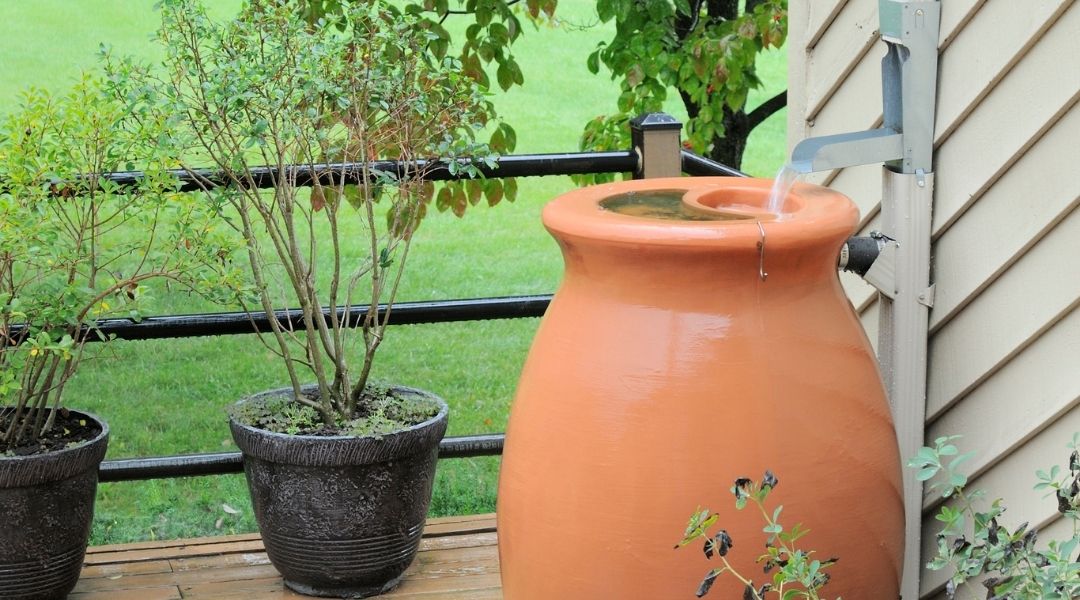
What are the Benefits of Using a Rain Barrel?
Some of the benefits of using a rain barrel include:
- Paying less for watering your landscape and garden
- Reducing water damage to the foundation of your house
- Preventing some ground erosion
- Providing a natural, unfiltered water source for your plants
- Reducing the amount of water that flows from your property
- FREE water!
- Slowing runoff
In addition to those benefits, the City of Tucson provides rainwater harvesting discounts.
Tucson Rainwater Harvesting Rebate
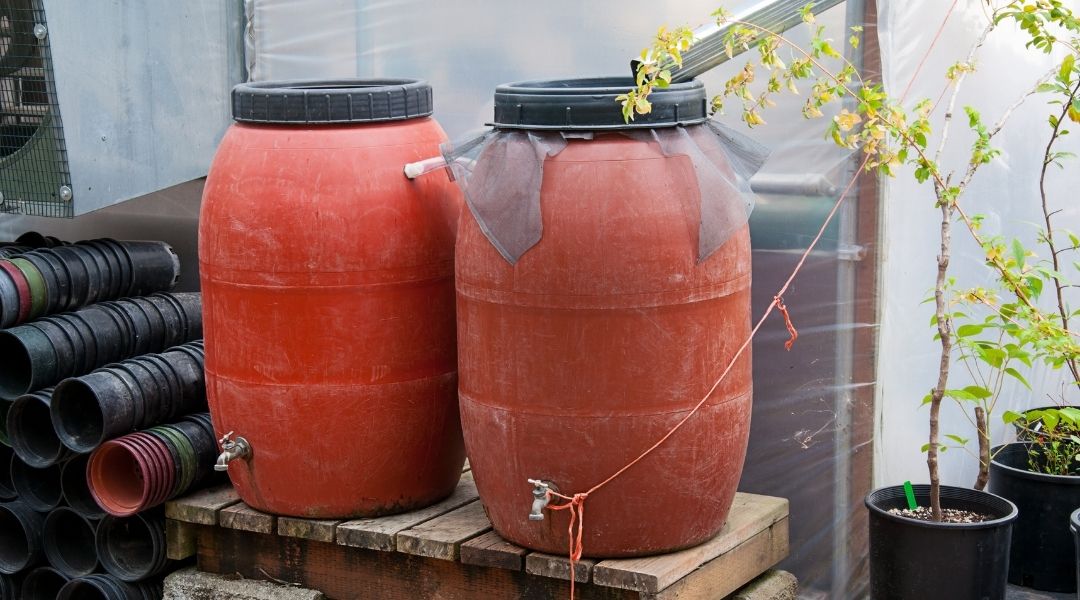
How Do You Set Up a Rain Barrel System?
Essentially, a rain barrel needs two things: A way for the water to get in, and a way for the water to get out. The actual setup can be more complicated, but those are the basic parts.
For the water to get into the barrel, a system of rain gutters is often used to collect the rainwater that falls on a roof. If you already have a gutter system with a downspout, you will probably want to set up your rain barrel(s) near the downspout, using some fittings to redirect the rainwater to the barrel.
If you don’t have any gutters or downspouts, you can place a rain chain from your roof to help the water fall towards your rain barrel. Ensure that the rain chain nearly touches the top of the barrel.
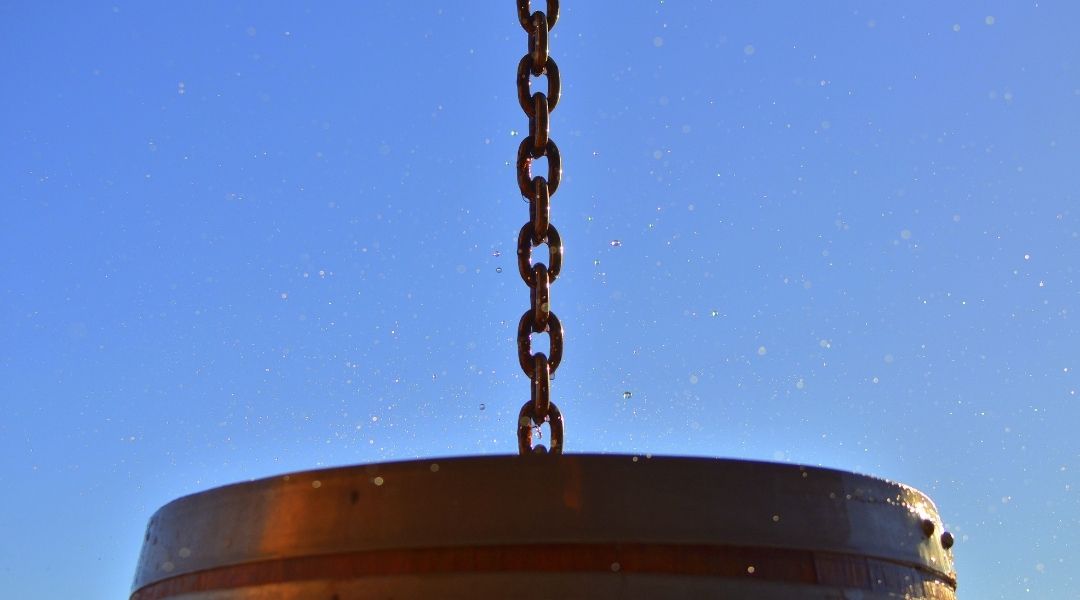
What’s a rain chain? Learn what they are, their purpose, and even how to make your own in this tutorial from Clemson Cooperative Extension.
When you want to use the water in the barrel, a spigot is needed. You can use this spigot to fill a watering can, or, in some instances, you can attach a garden hose. The spigot needs to be near the bottom of the barrel so that gravity encourages the water to flow out.
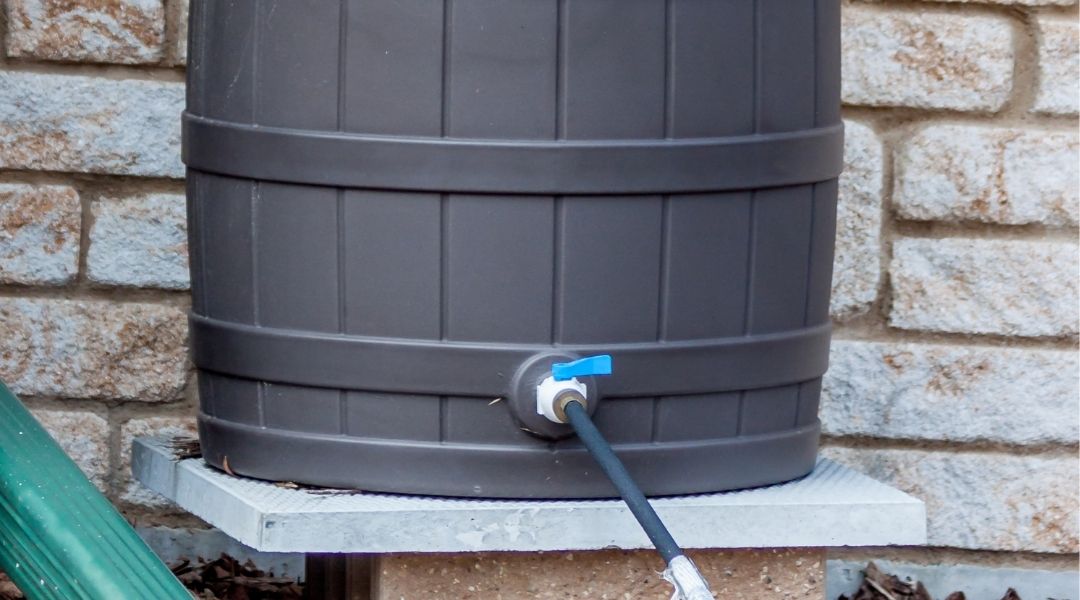
Because the spigot needs to be near the bottom of the barrel, many homeowners choose to place the rain barrel on a stand of some sort. This could be wood (though wood can warp over time and attract pests), tiles, cinder block, or concrete slabs. Placing the rain barrel on a stand allows you to place a watering can underneath the spigot to fill it up with water.
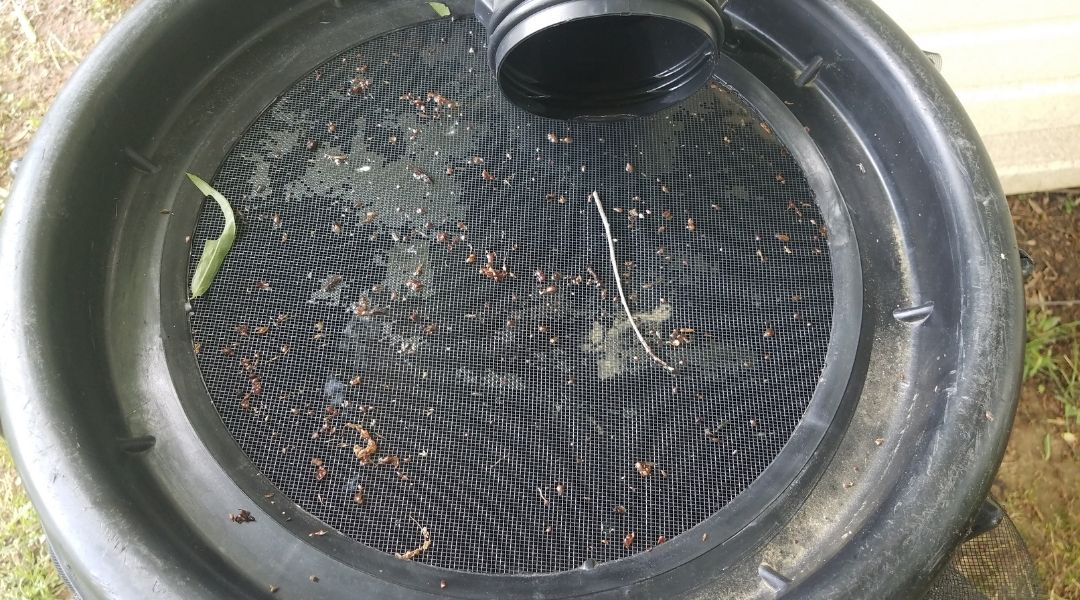
We know that various forms of debris end up on our roofs – from leaves and sticks to frisbees and baseballs. That’s why a filter is recommended – it’s easier to filter out the leaves and such before they reach the barrel than to have to clean the mess out of the barrel itself.
What About Mosquitoes in Rain Barrels?
A fine screen over the top of the barrel (or some sort of lid) can keep out mosquitoes. Mosquitoes can breed in as little as a small soda cap full of water, so keeping them out of a multiple-gallon tank is very important to control your yard’s mosquito population.
Another option is to drop a Mosquito Dunk into your rain barrel. Mosquito Dunks are a safe, non-toxic way to kill mosquitoes. Using a bacterium that is toxic only to mosquito larvae, the dunks kill mosquitoes within hours and last for 30 days or more. It's approved for use in organic production so the rain barrel water can be used in organic gardens.
Larger Rain Barrel Systems
If you want to collect more rainwater, you can connect multiple barrels on your property. There are also tools for attaching the gutter downspout to your rain barrel, for pumping water out of the barrel, and more.
You can make the rainwater collection system as simple or as detailed as you want, depending on your landscape needs and DIY skills.
Rain Barrel Tutorials
Here are some of the rain barrel tutorials we found online:
- Using a plastic garbage can as a rain barrel
- Turning a 55-gallon drum (or similar) into a rain barrel
- A Home Depot tutorial on rain barrels with photos and links to parts
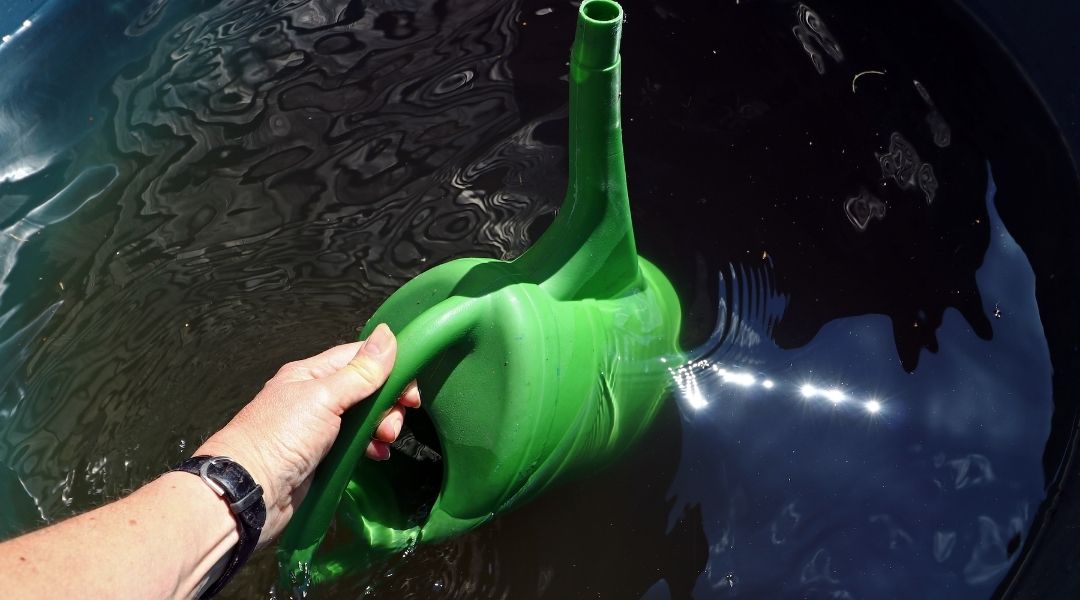
Is Rain Barrel Water Safe?
Rain barrels will contain what is known as non-potable water, which is not safe for human consumption. It is best used for landscape plants and birdbaths, and might be okay for vegetable gardens, but only if you water the soil, not the plant itself.
Keep in mind that the rainwater is not directly falling into your rain barrel. It's landing on the roof and flowing over whatever dirt and debris is up there (as well as the gutters, if you have them). Birds and other animals can leave quite a mess on roofs. Pollutants and bacteria can also collect there, as well as chemicals from roof materials.
While filters can keep some of the leaves, sticks, and debris out of the barrel, there is no easy and inexpensive way to filter the water to make it suitable for drinking.
That’s why we recommend you use the water in a rain barrel for your landscape plants, flowers, trees, and vines. While rainwater doesn't work well as drinking water, it often works better than tap water for your landscape plants, thanks to the lack of salt.
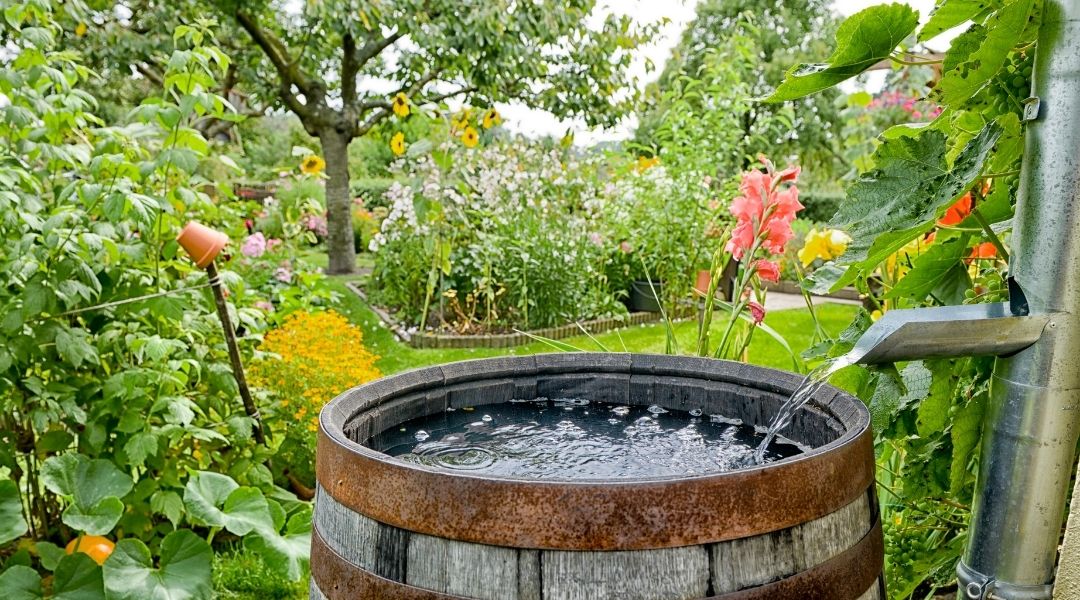
Aren’t Rain Barrels Illegal?
Rainwater harvesting is legal in Arizona, as long as you are gathering the water from your own property. Some states have regulations on rainwater harvesting, but none apply to residential properties in the state of Arizona.
It was previously thought that collecting rainwater would impact nearby streams and aquifers, so there were some places that prohibited it. However, that supposition has been proven false. When collected rainwater is used for plants in your landscape, that water is returned to the ground.
Various rainwater harvesting laws dated back to the gold rush, when prospectors would use any water they could get their hands on to flush out gold from streams, leading to a water shortage. Since that rarely happens anymore, those laws were overturned.
NOTE: There are rules about commercial rainwater harvesting, such as this ordinance from the City of Tucson: Commercial Rainwater Harvesting – Ordinance 10597.
Other states do have regulations pertaining to rainwater harvesting and rain barrels, however. So, if you plan on creating a rain barrel setup in another state, it is worth looking into the specific requirements for that area.
Most restrictions are for your benefit and tend to restrict WHAT the water is used for (not for drinking, cooking, showering, etc.) or HOW MUCH water is used (Colorado allows up to 110 gallons, for instance). Others have restrictions on HOW the rainwater is collected (in some places, a professional must install a cistern or rain barrel).
In Summary
Setting up a rain barrel system in your Tucson-area yard is a great way to use a natural resource - for just the cost of materials. Whether you decide to create a system from parts that you have or to purchase a full rain barrel system, your landscape plants will love the rainwater, and your wallet will love that your water bill won't increase.
Do you have a rain barrel on your Tucson-area residential property? We'd love to see it! Share your pictures in our Facebook Group.